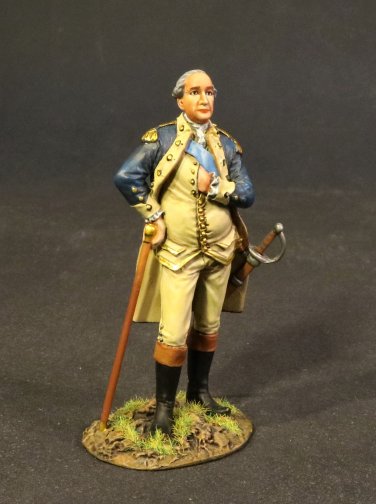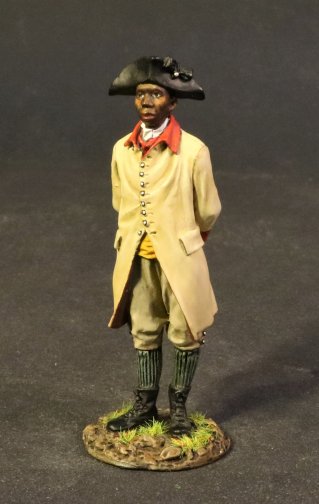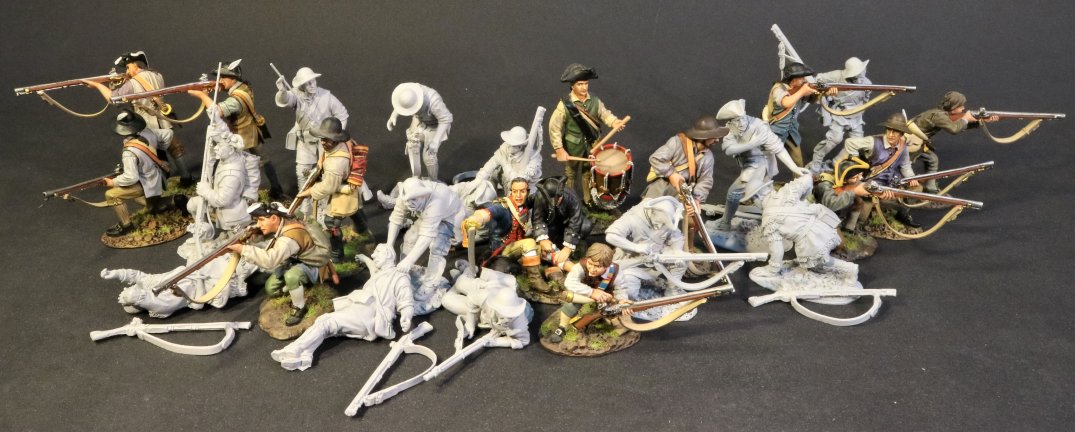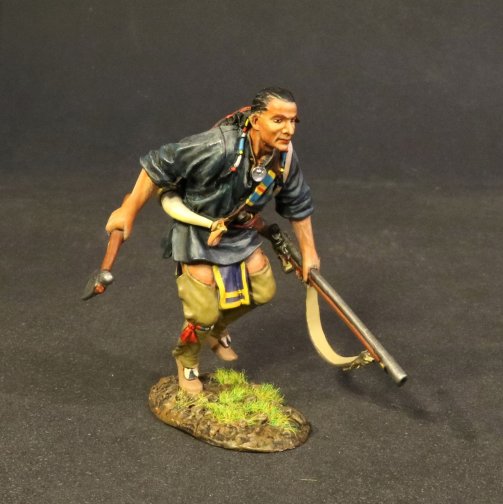NEW RELEASES FOR FEBRUARY 2020
THE EIGHTEENTH CENTURY COLLECTION
DRUMS ALONG THE MOHAWK
George Washington (February 22, 1732 – December 14, 1799) commanded the Continental Army in the American Revolutionary War (1775–1783).
In the early years of the war Washington was often in the middle of the action, first directing the Siege of Boston to its successful conclusion, but then losing New York City and almost losing New Jersey before winning surprising and decisive victories at Trenton and Princeton at the end of the 1776 campaign season. At the end of the year in both 1775 and 1776, he had to deal with expiring enlistments, since the Congress had only authorized the army's existence for single years. With the 1777 establishment of a more permanent army structure and the introduction of three-year enlistments, Washington built a reliable stable of experienced troops, although hard currency and supplies of all types were difficult to come by. In 1777 Washington was again defeated in the defense of Philadelphia, but sent critical support to Horatio Gates that made the defeat of Burgoyne at Saratoga possible. Following a difficult winter at Valley Forge and the entry of France into the war in 1778, Washington followed the British army as it withdrew from Philadelphia back to New York, and fought an ultimately inconclusive battle at Monmouth Court House in New Jersey.

SGEN-GW02
DRUMS ALONG THE MOHAWK,
THE BATTLE OF SARATOGA 1777,
CONTINENTAL ARMY,
GENERAL GEORGE WASHINGTON.
(1pc)
Washington's activities from late 1778 to 1780 were more diplomatic and organizational, as his army remained outside New York, watching Sir Henry Clinton's army that occupied the city. Washington strategized with the French on how best to cooperate in actions against the British, leading to ultimately unsuccessful attempts to dislodge the British from Newport, Rhode Island and Savannah, Georgia. His attention was also drawn to the frontier war, which prompted the 1779 Continental Army expedition of John Sullivan into upstate New York. When General Clinton sent the turncoat General Benedict Arnold to raid in Virginia, Washington began to detach elements of his army to face the growing threat there. The arrival of Lord Cornwallis in Virginia after campaigning in the south presented Washington with an opportunity to strike a decisive blow. Washington's army and the French army moved south to face Cornwallis, and a cooperative French navy under Admiral de Grasse successfully disrupted British attempts to control of the Chesapeake Bay, completing the entrapment of Cornwallis, who surrendered after the Siege of Yorktown in October 1781. Although Yorktown marked the end of significant hostilities in North America, the British still occupied New York and other cities, so Washington had to maintain the army in the face of a bankrupt Congress and troops that were at times mutinous over conditions and pay. The army was formally disbanded after peace in 1783, and Washington resigned his commission as commander-in-chief on December 23, 1783.
William “Billy” Lee (1750-1828) was George Washington’s personal assistant and the only one of Washington’s slaves freed immediately by Washington in his will.

SGEN-GW03
DRUMS ALONG THE MOHAWK,
THE BATTLE OF SARATOGA 1777,
CONTINENTAL ARMY,
WILLIAM “BILLY” LEE.
(1pc)
Born c.1750, Lee was purchased on May 27[SUP]th[/SUP] 1768, from the estate of the late Colonel John Lee of Westmoreland County, Virginia for sixty one pounds and fifteen shillings.
William “Billy” Lee served in a variety of roles, including Washington’s valet, where he performed chores such as brushing Washington’s long hair and tying it behind his head. He served at Washington’s side throughout the eight years of the Revolutionary War, including the winter at Valley forge and at the Siege of Yorktown.
According to historian Fritz Hirschfeld, Lee “rode alongside Washington in the thick of battle, ready to hand over to the general a spare horse or his telescope or whatever else might be needed”.
THE BATTLE OF ORISKANY, 1777

The Battle of Oriskany on August 6, 1777 was one of the bloodiest battles in the American Revolutionary War and a significant engagement of the Saratoga campaign. A party of Loyalists and several Indian allies ambushed an American military party that was trying to relieve the siege of Fort Stanwix. This was one of the few battles in which almost all of the participants were Americans; Patriots and allied Oneidas fought against Loyalists and allied Iroquois in the absence of British regular soldiers.
The Patriot relief force came from the Mohawk Valley under General Nicholas Herkimer and numbered around 800 men of the Tryon County militia plus a party of Oneida warriors. British commander Barry St. Leger authorized an intercepting force consisting of a Hanau Jäger (light infantry) detachment, Sir John Johnson's King's Royal Regiment of New York, Indian allies from the Six Nations, particularly Mohawks and Senecas and other tribes to the north and west, and Indian Department Rangers, totaling at least 450 men.
The Loyalist and Indian force ambushed Herkimer's force in a small valley about six miles (10 km) east of Fort Stanwix, near the village of Oriskany, New York. Herkimer was mortally wounded, and the battle cost the Patriots approximately 450 casualties, while the Loyalists and Indians lost approximately 150 dead and wounded. The result of the battle remains ambiguous. The apparent Loyalist victory was significantly affected by a sortie from Fort Stanwix in which the Loyalist camps were sacked, damaging morale among the allied Indians.
The battle also marked the beginning of a war among the Iroquois, as Oneida warriors under Colonel Louis and Han Yerry allied with the American cause. Most of the other Iroquois tribes allied with the British, especially the Mohawks and Senecas.

DAM-51
DRUMS ALONG THE MOHAWK,
THE BATTLE OF ORISKANY, August 6[SUP]th[/SUP] 1777,
MOHAWK WARRIOR.
(1pc)
In July and August 1775 Herkimer headed the Tryon County Committee of Safety, and became colonel of the district militia. After the split in which Loyalist militia members from the area withdrew to Canada, he was commissioned a brigadier general in the Tryon County militia by the Provincial Congress on September 5, 1776. In June 1776, he led 380 men of the Tryon County militia to confront Joseph Brant (Mohawk) at Unadilla, New York. Herkimer asked the Mohawk and five other Iroquois nations to remain neutral, while Brant said the Indians owed their loyalty to the King.
When Herkimer learned of the siege of Fort Stanwix to the west in late July 1777, he ordered the Tryon County militia to assemble at Fort Dayton. He marched them out to Fort Stanwix, about 28 miles to the west. His force marching in column was ambushed on August 6 by a mixed force of British regulars, Tory militia, and Mohawk in the Battle of Oriskany. Herkimer's horse was shot, and he was seriously wounded in the leg. In spite of his injuries, he sat propped up against a tree, lit his pipe, and directed his men in the battle, rallying them to avoid two panicked retreats. When they withdrew, they carried him home.
The brigade surgeon, William Petrie, dressed Herkimer's wound in the field and placed him on a litter. The wound quickly became infected, but the decision to amputate the leg was delayed for about ten days after the battle. The operation was performed by an inexperienced surgeon, Robert Johnson, because Petrie had also been wounded in the battle and was not available. The operation went poorly, the wound bled profusely, and Herkimer died of the injury on August 16, at around the age of 49.
The new militia figures can also be used to bulk out any American Revolution Continental regiments.
**PLEASE CONTACT YOUR LOCAL DEALER FOR FURTHER INFORMATION**
THE EIGHTEENTH CENTURY COLLECTION
DRUMS ALONG THE MOHAWK
George Washington (February 22, 1732 – December 14, 1799) commanded the Continental Army in the American Revolutionary War (1775–1783).
In the early years of the war Washington was often in the middle of the action, first directing the Siege of Boston to its successful conclusion, but then losing New York City and almost losing New Jersey before winning surprising and decisive victories at Trenton and Princeton at the end of the 1776 campaign season. At the end of the year in both 1775 and 1776, he had to deal with expiring enlistments, since the Congress had only authorized the army's existence for single years. With the 1777 establishment of a more permanent army structure and the introduction of three-year enlistments, Washington built a reliable stable of experienced troops, although hard currency and supplies of all types were difficult to come by. In 1777 Washington was again defeated in the defense of Philadelphia, but sent critical support to Horatio Gates that made the defeat of Burgoyne at Saratoga possible. Following a difficult winter at Valley Forge and the entry of France into the war in 1778, Washington followed the British army as it withdrew from Philadelphia back to New York, and fought an ultimately inconclusive battle at Monmouth Court House in New Jersey.

SGEN-GW02
DRUMS ALONG THE MOHAWK,
THE BATTLE OF SARATOGA 1777,
CONTINENTAL ARMY,
GENERAL GEORGE WASHINGTON.
(1pc)
Washington's activities from late 1778 to 1780 were more diplomatic and organizational, as his army remained outside New York, watching Sir Henry Clinton's army that occupied the city. Washington strategized with the French on how best to cooperate in actions against the British, leading to ultimately unsuccessful attempts to dislodge the British from Newport, Rhode Island and Savannah, Georgia. His attention was also drawn to the frontier war, which prompted the 1779 Continental Army expedition of John Sullivan into upstate New York. When General Clinton sent the turncoat General Benedict Arnold to raid in Virginia, Washington began to detach elements of his army to face the growing threat there. The arrival of Lord Cornwallis in Virginia after campaigning in the south presented Washington with an opportunity to strike a decisive blow. Washington's army and the French army moved south to face Cornwallis, and a cooperative French navy under Admiral de Grasse successfully disrupted British attempts to control of the Chesapeake Bay, completing the entrapment of Cornwallis, who surrendered after the Siege of Yorktown in October 1781. Although Yorktown marked the end of significant hostilities in North America, the British still occupied New York and other cities, so Washington had to maintain the army in the face of a bankrupt Congress and troops that were at times mutinous over conditions and pay. The army was formally disbanded after peace in 1783, and Washington resigned his commission as commander-in-chief on December 23, 1783.
William “Billy” Lee (1750-1828) was George Washington’s personal assistant and the only one of Washington’s slaves freed immediately by Washington in his will.

SGEN-GW03
DRUMS ALONG THE MOHAWK,
THE BATTLE OF SARATOGA 1777,
CONTINENTAL ARMY,
WILLIAM “BILLY” LEE.
(1pc)
Born c.1750, Lee was purchased on May 27[SUP]th[/SUP] 1768, from the estate of the late Colonel John Lee of Westmoreland County, Virginia for sixty one pounds and fifteen shillings.
William “Billy” Lee served in a variety of roles, including Washington’s valet, where he performed chores such as brushing Washington’s long hair and tying it behind his head. He served at Washington’s side throughout the eight years of the Revolutionary War, including the winter at Valley forge and at the Siege of Yorktown.
According to historian Fritz Hirschfeld, Lee “rode alongside Washington in the thick of battle, ready to hand over to the general a spare horse or his telescope or whatever else might be needed”.
THE BATTLE OF ORISKANY, 1777

The Battle of Oriskany on August 6, 1777 was one of the bloodiest battles in the American Revolutionary War and a significant engagement of the Saratoga campaign. A party of Loyalists and several Indian allies ambushed an American military party that was trying to relieve the siege of Fort Stanwix. This was one of the few battles in which almost all of the participants were Americans; Patriots and allied Oneidas fought against Loyalists and allied Iroquois in the absence of British regular soldiers.
The Patriot relief force came from the Mohawk Valley under General Nicholas Herkimer and numbered around 800 men of the Tryon County militia plus a party of Oneida warriors. British commander Barry St. Leger authorized an intercepting force consisting of a Hanau Jäger (light infantry) detachment, Sir John Johnson's King's Royal Regiment of New York, Indian allies from the Six Nations, particularly Mohawks and Senecas and other tribes to the north and west, and Indian Department Rangers, totaling at least 450 men.
The Loyalist and Indian force ambushed Herkimer's force in a small valley about six miles (10 km) east of Fort Stanwix, near the village of Oriskany, New York. Herkimer was mortally wounded, and the battle cost the Patriots approximately 450 casualties, while the Loyalists and Indians lost approximately 150 dead and wounded. The result of the battle remains ambiguous. The apparent Loyalist victory was significantly affected by a sortie from Fort Stanwix in which the Loyalist camps were sacked, damaging morale among the allied Indians.
The battle also marked the beginning of a war among the Iroquois, as Oneida warriors under Colonel Louis and Han Yerry allied with the American cause. Most of the other Iroquois tribes allied with the British, especially the Mohawks and Senecas.

DAM-51
DRUMS ALONG THE MOHAWK,
THE BATTLE OF ORISKANY, August 6[SUP]th[/SUP] 1777,
MOHAWK WARRIOR.
(1pc)
In July and August 1775 Herkimer headed the Tryon County Committee of Safety, and became colonel of the district militia. After the split in which Loyalist militia members from the area withdrew to Canada, he was commissioned a brigadier general in the Tryon County militia by the Provincial Congress on September 5, 1776. In June 1776, he led 380 men of the Tryon County militia to confront Joseph Brant (Mohawk) at Unadilla, New York. Herkimer asked the Mohawk and five other Iroquois nations to remain neutral, while Brant said the Indians owed their loyalty to the King.
When Herkimer learned of the siege of Fort Stanwix to the west in late July 1777, he ordered the Tryon County militia to assemble at Fort Dayton. He marched them out to Fort Stanwix, about 28 miles to the west. His force marching in column was ambushed on August 6 by a mixed force of British regulars, Tory militia, and Mohawk in the Battle of Oriskany. Herkimer's horse was shot, and he was seriously wounded in the leg. In spite of his injuries, he sat propped up against a tree, lit his pipe, and directed his men in the battle, rallying them to avoid two panicked retreats. When they withdrew, they carried him home.
The brigade surgeon, William Petrie, dressed Herkimer's wound in the field and placed him on a litter. The wound quickly became infected, but the decision to amputate the leg was delayed for about ten days after the battle. The operation was performed by an inexperienced surgeon, Robert Johnson, because Petrie had also been wounded in the battle and was not available. The operation went poorly, the wound bled profusely, and Herkimer died of the injury on August 16, at around the age of 49.
The new militia figures can also be used to bulk out any American Revolution Continental regiments.
**PLEASE CONTACT YOUR LOCAL DEALER FOR FURTHER INFORMATION**

